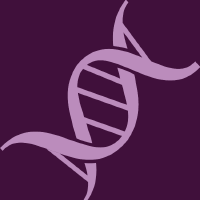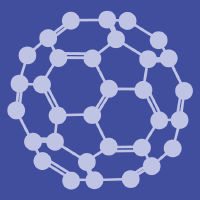Topic Menu
► Topic MenuTopic Editors


New Nanomaterials for Biomedical Applications
Topic Information
Dear Colleagues,
In recent years, nanomaterials have gained much interest in the biomedical field, namely in drug delivery, tissue engineering, phototherapy, magnetic hyperthermia therapy, immunotherapy, and antimicrobial therapy, among others. There is now a broad field of research on developing new nanomaterials specifically designed for the previously mentioned bio-applications. Features such as particle morphology (size, thickness, shape) and physicochemical properties play a crucial role in their biological effect and can be tuned to achieve the desired therapeutic outcomes. Surface chemistry and modifications, loading with drugs, or targeting molecules are often performed to maximize treatment efficacy and selectivity. In recent years, new nanomaterials have been introduced, such as graphene-based materials and other two-dimensional nanomaterials, which promise to revolutionize the field of nanomedicine. Nanomaterials produced by self-assembly also present high versatility and almost an illimited range of combinations and structures that can be explored.
This Topic invites original papers and reviews on the recent progress in the following areas:
- Nanomaterials for biomedical applications, such as 2D nanomaterials; metallic-, polymeric-, and lipid-based nanoparticles; metallic-organic frameworks; and self-assembled nanoparticles.
- Surface modification of nanomaterials, such as adsorption or chemical functionalization, to allow for the adjustment of the surface chemistry or for the loading of drugs. This includes functionalization with targeting molecules, antibodies, and/or immunotherapy agents.
- Development of photo-responsive nanomaterials (for cancer phototherapy or antibacterial action) comprising an optimization of the properties and an understanding of the mechanisms that dictate their photothermal and/or photodynamic properties.
- Study of drug loading and release from the surfaces of nanomaterials, their optimization, and biological effects.
- New magnetic hyperthermia therapy agents (based on nanomaterials) with improved magnetic properties, stability in physiological media, biocompatibility, and therapeutic effects.
- Study of nanomaterial-mediated immunomodulation to achieve an immunostimulatory effect (e.g., cancer therapy) or an immunosuppressive effect (e.g., autoimmune diseases).
- Use of nanomaterials for tissue regeneration, cancer therapy, antibacterial effects, etc.—including the production of scaffolds and 3D-printed structures, among others—as well as for related applications as free-standing biomaterials (such as scaffolds, foams, films, etc.).
Articles combining different types of the above-mentioned therapies are highly welcome since this is still an unexplored subject in the field.
Dr. Artur M. Pinto
Dr. Fernão D. Magalhães
Dr. Jean Anne C. Incorvia
Topic Editors
Keywords
- nanomaterials
- two-dimensional nanomaterials
- cancer therapy
- drug delivery
- phototherapy
- magnetic hyperthermia therapy
- tissue engineering
- tissue regeneration
- antimicrobial
- antibacterial
- immunotherapy
Participating Journals
| Journal Name | Impact Factor | CiteScore | Launched Year | First Decision (median) | APC |
|---|---|---|---|---|---|

Bioengineering
|
3.7 | 5.3 | 2014 | 19.2 Days | CHF 2700 |

International Journal of Molecular Sciences
|
4.9 | 9.0 | 2000 | 20.5 Days | CHF 2900 |

Nanomaterials
|
4.3 | 9.2 | 2010 | 15.4 Days | CHF 2400 |

Pharmaceutics
|
5.5 | 10.0 | 2009 | 14.9 Days | CHF 2900 |

Scientia Pharmaceutica
|
2.5 | 4.6 | 1930 | 38.1 Days | CHF 1000 |

Preprints.org is a multidisciplinary platform offering a preprint service designed to facilitate the early sharing of your research. It supports and empowers your research journey from the very beginning.
MDPI Topics is collaborating with Preprints.org and has established a direct connection between MDPI journals and the platform. Authors are encouraged to take advantage of this opportunity by posting their preprints at Preprints.org prior to publication:
- Share your research immediately: disseminate your ideas prior to publication and establish priority for your work.
- Safeguard your intellectual contribution: Protect your ideas with a time-stamped preprint that serves as proof of your research timeline.
- Boost visibility and impact: Increase the reach and influence of your research by making it accessible to a global audience.
- Gain early feedback: Receive valuable input and insights from peers before submitting to a journal.
- Ensure broad indexing: Web of Science (Preprint Citation Index), Google Scholar, Crossref, SHARE, PrePubMed, Scilit and Europe PMC.


